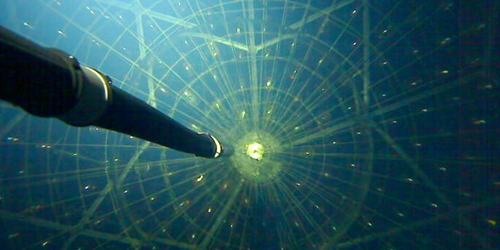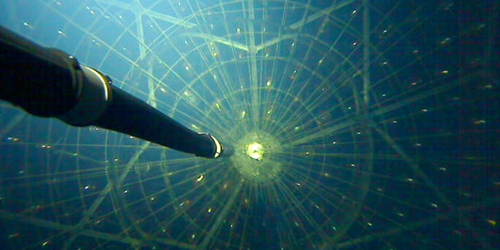Searching for Majorana Neutrinos
Are neutrinos and antineutrinos the same particles, as hypothesized by physicist Ettore Majorana? If true, this “Majorana” nature of neutrinos could explain why neutrinos have mass and why the Universe has more matter than antimatter. Using an underground neutrino detector in Japan, the KamLAND-Zen collaboration has carried out the most sensitive search to date for a process called neutrinoless double-beta decay, which could confirm Majorana’s hypothesis. The results set stringent constraints on the possible properties of Majorana neutrinos.
Double-beta decay is a nuclear process in which two neutrons turn into two protons (or vice versa), emitting two antineutrinos. If neutrinos are Majorana fermions, the two antineutrinos could annihilate each other, and some double-beta decays would emit no antineutrinos. However, neutrinoless decay is believed to be extremely rare. Searches of the process using large amounts of the 35 naturally occurring isotopes that can undergo double-beta decay (such as xenon-136) have so far come up empty.
The KamLAND-Zen collaboration boosted their experimental sensitivity to neutrinoless double-beta decays through a combination of factors. The researchers deployed clean detectors with very low background noise. And they used an unprecedented amount of xenon-136, which they purified to remove any radioactive contaminants that could produce unwanted signals in the detectors. Combining data from several years, they improved the limit on the probability of neutrinoless double-beta decay by sixfold compared to previous searches. This probability corresponds to a decay lifetime whose staggering value exceeds years. This measurement allowed the researchers to set the most stringent upper limit on the possible mass of Majorana neutrinos (the particle must be lighter than 61–165 meV).
This research is published in Physical Review Letters.
–Matteo Rini
Matteo Rini is the Deputy Editor of Physics.





